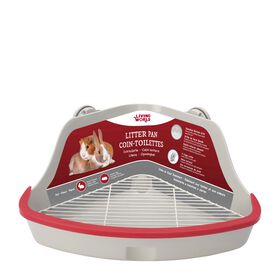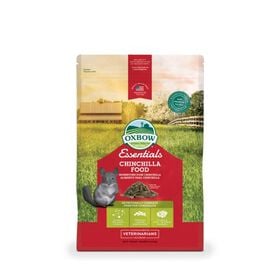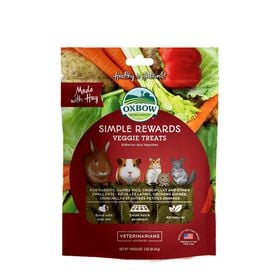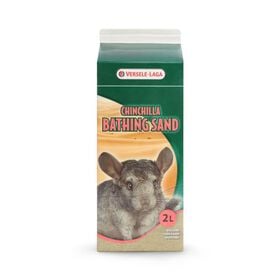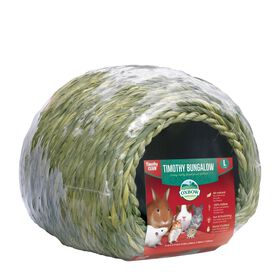Interested in getting a pet? Think chinchillas are just the cutest? If this sounds like you, make sure you’re well informed on the kind of care that will be required before making any plans to adopt!
To start, did you know chinchillas are nocturnal and live up to 10 years in captivity? These are just a couple of the things to consider before deciding to welcome this pet into your home. It’s also important to have a firm understanding of their environment, diet and basic needs.

A quality environment is key
First off, it’s important to know that chinchillas must not be left to run free in the house without surveillance. Their compulsion to chew on any object puts them at immediate risk of being electrocuted or poisoned. Constant surveillance is therefore key.
Plus, because chinchillas sleep during the day, we recommend putting them in a part of the house that is quiet or unoccupied during the day. Also, they prefer to be in a fresh, clean environment, so use a dehumidifier if the space is overly humid, such as in a basement (chinchillas prefer crispier over warm temperatures).
Ideally, your chinchilla’s cage should be sufficiently large and equipped with landings so they can climb around at will. As for litter, it’s an absolute must, and we recommend recycled paper; cedar chips can irritate the eyes, skin and respiratory system, and are best avoided.
Examples of accessories for inside the cage:
- Food and water bowls
- Sand bath
- Small house made of wood or cardboard
- Landings (small, securely-installed wooden perches)
- Branches fastened securely onto the cage
- Basket of hay
- Exercise wheel suited to their size and ideally non-mesh. (Chinchillas need a lot of exercise!)
Examples of toys to have inside the cage:
- Paper bags
- Cardboard boxes
- Empty rolls of toilet paper or tissue boxes
- Natural wicker basket
- Old magazines or books
- Cat balls
- Parrot toys
- Small apple tree branches that have been disinfected in the oven

Fresh water at all times
Make sure your chinchilla has access to fresh water at all times. Some prefer bottles, some prefer bowls — find out which one is right for your pet. That said, it’s important to ensure the water never touches your chinchilla’s fur, and likewise, you must never wash them in water. Chinchillas absorb water through their skin, and their fur doesn’t tolerate humidity or heat very well.
Using a sand bath as a toilet
Chinchillas are proud animals, and they spend a lot of time in the bathroom. Because their fur is silky, a sand bath is absolutely necessary. Whichever sand you decide to use, it must be extra-fine, and once you find it, stick to it.
Sand baths help maintain a clean coat and prevent skin diseases. Here are a few tips to follow for sand baths:
- Offer them a sand bath a few times per week
- Take it out after 20 or 30 minutes
- Don’t leave it in the cage — the sand will quickly become dirty and extended contact will irritate your pet’s eyes.
Furthermore, the bath must be large enough for your pet to roll around in it. Fill it with a few centimetres of sand. If it isn’t dirty after a bath, you can use it again.

Control their diet
Chinchillas have fragile digestive systems, so it's important not to give them an overly rich diet. Additionally, their food should consist of specially formulated feed, hay, water and a small quantity of vegetables. Most importantly, never succumb to the temptation to give them what they beg for: chinchillas don't instinctually know which foods are good for their health!
Your chinchilla can eat their food at will — they don't tend to take on weight needlessly. Be sure to feed them at the end of the day, considering their level of activity during the night. Also, if you want to change their food, do so gradually: the intestinal flora of chinchillas is highly sensitive to sudden changes.
Furthermore, in order to avoid digestive issues as well as hairballs, your chinchilla must always have dry hay in their cage. We also recommend gently introducing vegetables into their diet, in limited quantities. You can give them certain fruits as well, but in very small amounts, and only as a treat (not on a daily basis). The digestive system of some chinchillas will be more sensitive than others, and won't tolerate fruit so well. For these reasons, it's important to keep a close eye on your pet.
The following vegetables are generally appreciated:
- Asparagus
- Broccoli
- Celery
- Chicory
- Cauliflower
- Zucchini
- Cucumber
- Endives
- Spinach
- Escarole
- Dandelion leaves
- Romaine lettuce
- Turnip
- Parsnip
- Parsley
- Green peppers
- Radicchio
- Rapini
The following fruits are generally okay:
- Pineapple
- Bananas
- Blueberries
- Strawberries
- Raspberries
- Melon
- Oranges
- Papayas
- Peaches
- Pears
- Apples
- Plums
- Raisins
Note: Avocados, onions and garlic are all toxic, as are potatoes, which contain too much starch.
As you can probably tell, taking care of a chinchilla is no easy job! But, by understanding their basic needs, as well as their ideal diet and environment, you can provide with the care they need to live and thrive.
Now that you know a bit more about what's involved in raising a chinchilla, the next step is finding the perfect one! As always, when doing your research, be sure to consider shelters or the SPCA!


